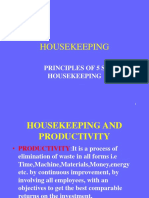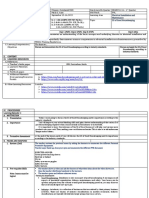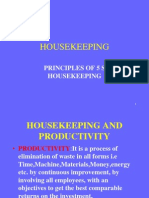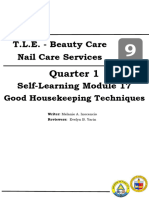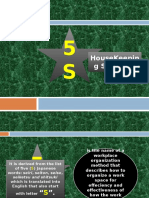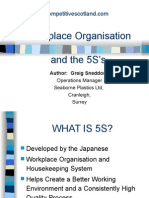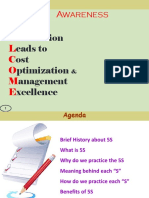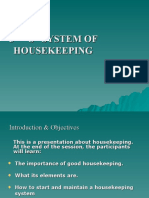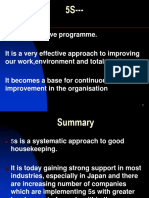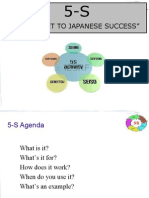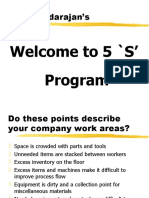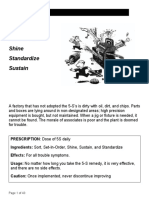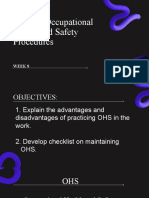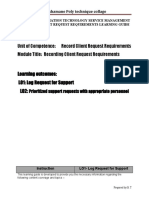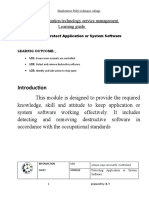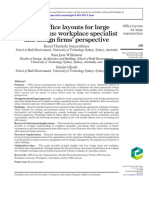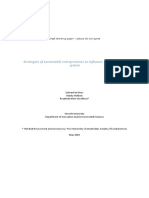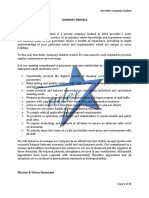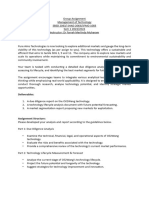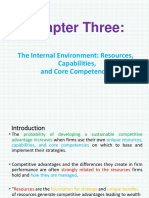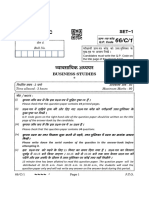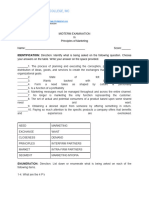0% found this document useful (0 votes)
293 views10 pagesShashemene Poly Technique COLLAGE: Perform Housekeeping Procedures
This document provides information about housekeeping procedures and 5S methodology. It consists of several sections on topics like the benefits of good housekeeping, costs of poor housekeeping, daily housekeeping checklists, the history and goals of 5S methodology, and explanations of each of the 5S steps (Sort, Set In Order, Shine, Standardize, and Sustain). The overall document aims to outline best practices for maintaining an organized and clean work environment through housekeeping and visual management techniques.
Uploaded by
Gizaw TadesseCopyright
© © All Rights Reserved
We take content rights seriously. If you suspect this is your content, claim it here.
Available Formats
Download as DOC, PDF, TXT or read online on Scribd
0% found this document useful (0 votes)
293 views10 pagesShashemene Poly Technique COLLAGE: Perform Housekeeping Procedures
This document provides information about housekeeping procedures and 5S methodology. It consists of several sections on topics like the benefits of good housekeeping, costs of poor housekeeping, daily housekeeping checklists, the history and goals of 5S methodology, and explanations of each of the 5S steps (Sort, Set In Order, Shine, Standardize, and Sustain). The overall document aims to outline best practices for maintaining an organized and clean work environment through housekeeping and visual management techniques.
Uploaded by
Gizaw TadesseCopyright
© © All Rights Reserved
We take content rights seriously. If you suspect this is your content, claim it here.
Available Formats
Download as DOC, PDF, TXT or read online on Scribd
/ 10








